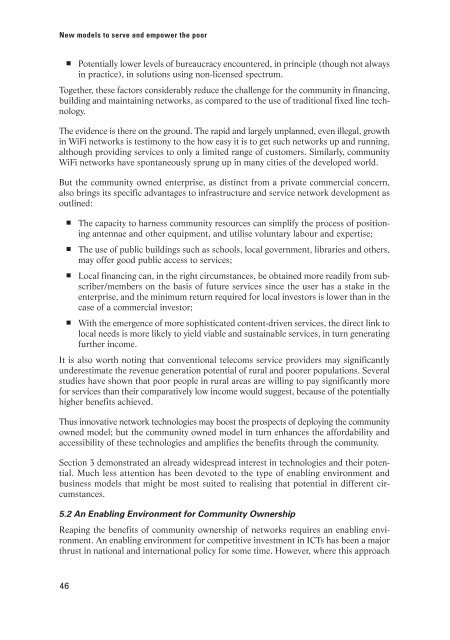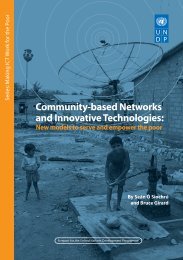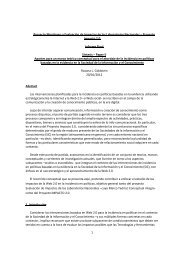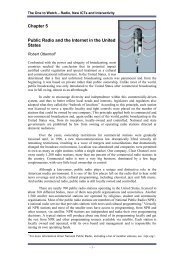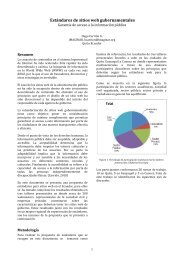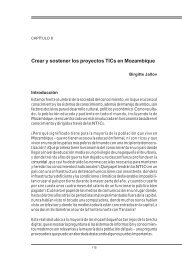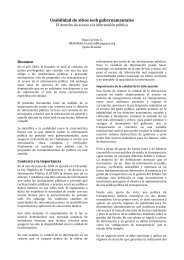report - Community-based Networks and Innovative Technologies ...
report - Community-based Networks and Innovative Technologies ...
report - Community-based Networks and Innovative Technologies ...
You also want an ePaper? Increase the reach of your titles
YUMPU automatically turns print PDFs into web optimized ePapers that Google loves.
New models to serve <strong>and</strong> empower the poor<br />
■<br />
Potentially lower levels of bureaucracy encountered, in principle (though not always<br />
in practice), in solutions using non-licensed spectrum.<br />
Together, these factors considerably reduce the challenge for the community in financing,<br />
building <strong>and</strong> maintaining networks, as compared to the use of traditional fixed line technology.<br />
The evidence is there on the ground. The rapid <strong>and</strong> largely unplanned, even illegal, growth<br />
in WiFi networks is testimony to the how easy it is to get such networks up <strong>and</strong> running,<br />
although providing services to only a limited range of customers. Similarly, community<br />
WiFi networks have spontaneously sprung up in many cities of the developed world.<br />
But the community owned enterprise, as distinct from a private commercial concern,<br />
also brings its specific advantages to infrastructure <strong>and</strong> service network development as<br />
outlined:<br />
■<br />
■<br />
■<br />
■<br />
The capacity to harness community resources can simplify the process of positioning<br />
antennae <strong>and</strong> other equipment, <strong>and</strong> utilise voluntary labour <strong>and</strong> expertise;<br />
The use of public buildings such as schools, local government, libraries <strong>and</strong> others,<br />
may offer good public access to services;<br />
Local financing can, in the right circumstances, be obtained more readily from subscriber/members<br />
on the basis of future services since the user has a stake in the<br />
enterprise, <strong>and</strong> the minimum return required for local investors is lower than in the<br />
case of a commercial investor;<br />
With the emergence of more sophisticated content-driven services, the direct link to<br />
local needs is more likely to yield viable <strong>and</strong> sustainable services, in turn generating<br />
further income.<br />
It is also worth noting that conventional telecoms service providers may significantly<br />
underestimate the revenue generation potential of rural <strong>and</strong> poorer populations. Several<br />
studies have shown that poor people in rural areas are willing to pay significantly more<br />
for services than their comparatively low income would suggest, because of the potentially<br />
higher benefits achieved.<br />
Thus innovative network technologies may boost the prospects of deploying the community<br />
owned model; but the community owned model in turn enhances the affordability <strong>and</strong><br />
accessibility of these technologies <strong>and</strong> amplifies the benefits through the community.<br />
Section 3 demonstrated an already widespread interest in technologies <strong>and</strong> their potential.<br />
Much less attention has been devoted to the type of enabling environment <strong>and</strong><br />
business models that might be most suited to realising that potential in different circumstances.<br />
5.2 An Enabling Environment for <strong>Community</strong> Ownership<br />
Reaping the benefits of community ownership of networks requires an enabling environment.<br />
An enabling environment for competitive investment in ICTs has been a major<br />
thrust in national <strong>and</strong> international policy for some time. However, where this approach<br />
46


